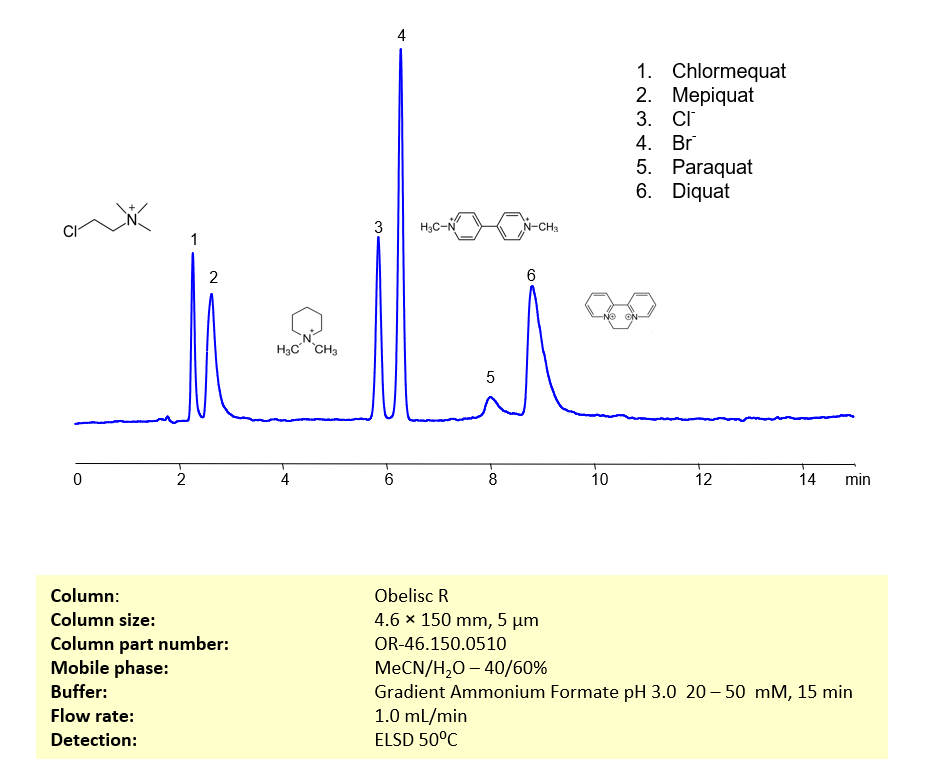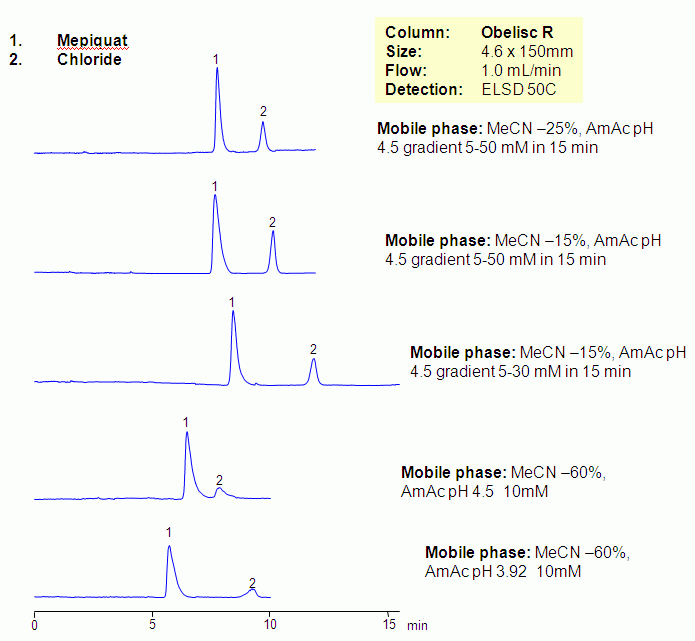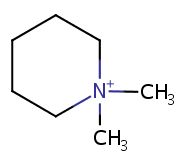| CAS Number | 15302-91-7 |
|---|---|
| Molecular Formula | C7H16N |
| Molecular Weight | 114.211 |
| InChI Key | NNCAWEWCFVZOGF-UHFFFAOYSA-N |
| LogP | -1.92 |
| Synonyms |
|
Applications:
HPLC Method for Simultaneous Determination of -Quat Herbicides on Obelisc R Column
September 22, 2022
High Performance Liquid Chromatography (HPLC) Method for Analysis of Chlormequat, Mepiquat, Paraquat, Diquat

| Column | Obelisc R, 4.6×150 mm, 5 µm, 100A |
| Mobile Phase | MeCN – 40% |
| Buffer | Ammonium Formate pH 3.0 |
| Flow Rate | 1.0 ml/min |
| Detection | ELSD 50C |
| Class of Compounds | Herbicides |
| Analyzing Compounds |
Chlormequat, Mepiquat, Cl-, Br-, Paraquat, Diquat |
Application Column
Obelisc R
SIELC has developed the Obelisc™ columns, which are mixed-mode and utilize Liquid Separation Cell technology (LiSC™). These cost-effective columns are the first of their kind to be commercially available and can replace multiple HPLC columns, including reversed-phase (RP), AQ-type reversed-phase, polar-embedded group RP columns, normal-phase, cation-exchange, anion-exchange, ion-exclusion, and HILIC (Hydrophilic Interaction Liquid Chromatography) columns. By controlling just three orthogonal method parameters - buffer concentration, buffer pH, and organic modifier concentration - users can adjust the column properties with pinpoint precision to separate complex mixtures.
Select optionsDiquat
Mepiquat
Paraquat

HPLC Separation of Mepiquat on Obelisc R Column
July 8, 2011

Mepiquat is a plant growth regulator that is monitored by EPA in water. It is a quaternary amine that is very polar in nature. Mepiquat and other hydrophilic amines are not retained on reversed-phase columns, and produce poor peak shape due to residual silanol interactions. Ion-pairing reagent is required to retain mepiquat. Ion-pairing reagents are not compatible with LC/MS detection and most environmental application require high sensitivity methods to determine very low level of contaminants. Obelisc R mixed-mode column can be used for EPA methods for determination of common pesticides, herbicides and insecticides where analysis of very polar ionic compounds is required.
| Column | Obelisc R, 4.6×50 mm, 5 µm, 100A |
| Mobile Phase | MeCN/H2O |
| Buffer | AmAc |
| Flow Rate | 1.0 ml/min |
| Detection | ELSD 50C |
| Class of Compounds |
Grow regulator, Hydrophilic, Ionizable |
| Analyzing Compounds | Mepiquat, Chloride |
Application Column
Obelisc R
SIELC has developed the Obelisc™ columns, which are mixed-mode and utilize Liquid Separation Cell technology (LiSC™). These cost-effective columns are the first of their kind to be commercially available and can replace multiple HPLC columns, including reversed-phase (RP), AQ-type reversed-phase, polar-embedded group RP columns, normal-phase, cation-exchange, anion-exchange, ion-exclusion, and HILIC (Hydrophilic Interaction Liquid Chromatography) columns. By controlling just three orthogonal method parameters - buffer concentration, buffer pH, and organic modifier concentration - users can adjust the column properties with pinpoint precision to separate complex mixtures.
Select optionsMepiquat



